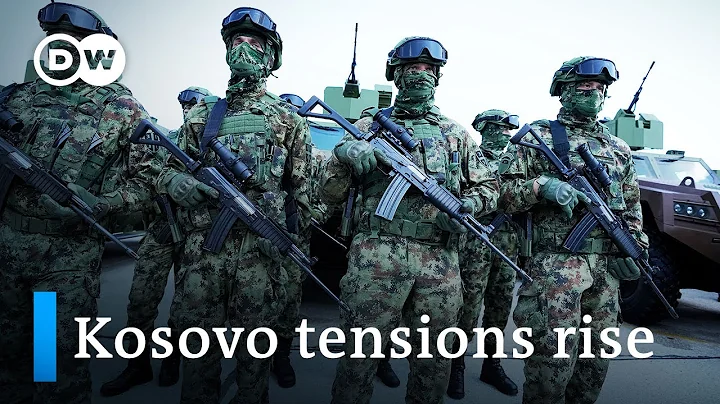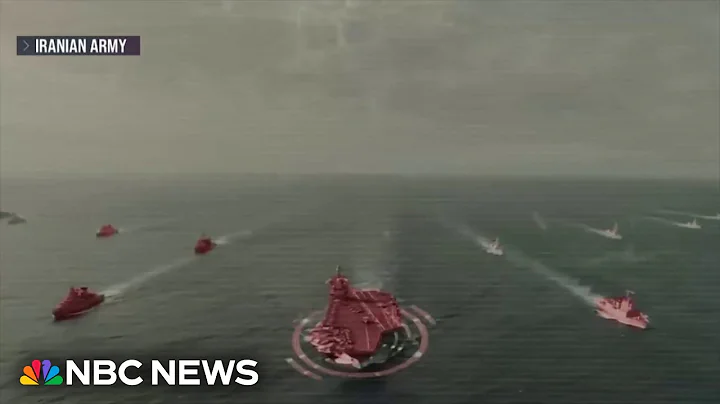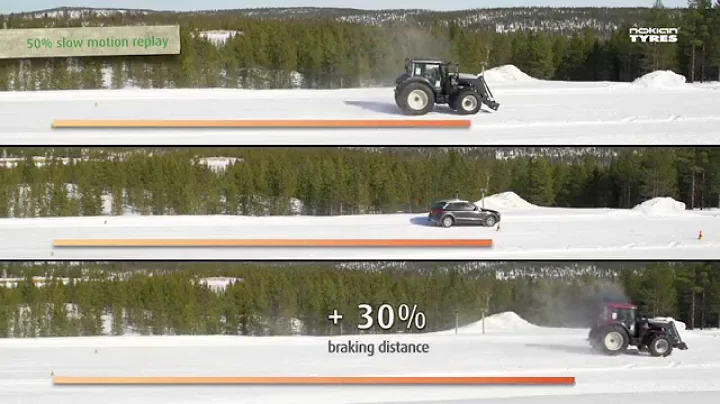After the Iraq War and Kosovo War , after the US military spared no effort to promote it, the public has become accustomed to the precision-guided bombs dropped from US military aircraft. Many people think that it is a very simple thing to drop a bomb from an altitude of tens of thousands of meters and hit a house.
But in fact, before the invention of laser and GPS guidance technology, it used to be very difficult for bombs to hit their targets. During the First World War, pilots flying bi-decker aircraft had already begun dropping bombs from the aircraft to attack ground targets. At that time, the flying height of aircraft during bombing was only about 100 meters, which was similar to the 30-story buildings we have today; the flying speed was only more than 100 kilometers per hour, which was similar to that of cars on the highway. Pilots throw bombs based on their own feelings. Whether they can hit the target depends on the pilot's skill.
We know that after leaving the plane, the bomb will undergo free fall while continuing to move forward at the same speed as when it left the plane. Theoretically, as long as you know the height and initial velocity of the bomb when it leaves the aircraft, you can calculate its impact point. But during the battle between and , because the speed and height of aircraft bombing were very small, no one would actually take paper and pen to calculate. Everyone just threw it twice and found the feeling. It's just like playing basketball. No one will use mathematical formulas to calculate the shooting angle and strength. You will naturally know how to shoot after practicing a few times on the court. Of course, the accuracy of aircraft bombing during this period was not very good. It is said that even excellent pilots could only drop bombs within 15 meters of the target.
By the time of World War , bombers were getting faster and faster, and at the same time they were flying higher and higher to avoid ground anti-aircraft fire. At this time, bombers often flew at an altitude of more than 8,000 meters and at a speed of more than 250 kilometers per hour when performing missions. It would take half a minute for the bombs they dropped to hit the ground. In other words, the pilot will release the bomb when he is still more than two kilometers away from the bombing target. Someone has calculated that if two identical planes each drop a bomb at the same time, if their flying speeds and flying heights when dropping the bombs differ by 3 kilometers per hour and 10 meters, then the impact points of the two bombs can differ by 40 meters. A lot of meters.
If pilots in World War I could still rely on touch to drop bombs, bomber pilots in World War II had to calculate the timing to release bombs. In order to improve the accuracy of high-altitude bombing, the Americans developed an automatic calculation device called the Norden Bombsight. This is a mechanical device that looks somewhat steampunk-style. After the crew inputs the flight altitude, flight speed, wind speed and target location, a series of gears in this device can automatically calculate the time to drop the bomb. The U.S. Air Force was very optimistic about this Norton sight, and once proudly claimed that this device could allow them to accurately hit a pickle barrel at an altitude of 10,000 meters. The U.S. military spent a total of 1.1 billion U.S. dollars on this system (the Manhattan Project that created the atomic bomb only cost 2 billion U.S. dollars). In order to prevent the Germans from getting this secret, the Americans also specially installed a self-destruction device in each set of Norton sights. They also made the bomber crews swear never to reveal the details of the targeting device to the enemy if captured by the Germans.

Norton sight, looks quite steampunk
So how does this device actually perform on the battlefield? Very disappointing. In simulation tests, the circular probability error of the Norton sight was 23 meters. This number means that 50% of the bombs can fall within a circle with a radius of 23 meters centered on the target. This is a pretty good result. But don’t forget, this is data tested under ideal usage conditions. After being put into use on real battlefields with much more complex conditions, the actual circular probability error of this sight reached an astonishing 370 meters.Considering that most of the bombs used by the U.S. military in World War II had a lethality radius of only about 30 meters, this means that most of the bombs dropped by U.S. pilots at the risk of their lives would not reach their targets at all.
A combat example from 1944 can well illustrate how poor the accuracy of this Norton sight, which was solemnly classified as top secret by the U.S. Air Force, was. In this year, the US military listed a German chemical factory covering an area of 300,000 square meters as a bombing target. In order to blow up the factory, the US military sent a huge group of bombers and bombed the target 22 times, dropping a total of 85,000 bombs. Faced with this huge target covering an area equivalent to 40 football fields, only 10% of the bombs fell into the chemical plant. Among these 10% of bombs, there are still some bombs that did not explode due to various reasons. If the bombing target is a house the size of a tennis court, the hit rate is even lower. Some people estimate that about 500 bombs need to be dropped before one or two can hit the target.
This is still a stationary fixed target. You can imagine, if you want to attack a moving warship on the sea, how low will the hit rate be? Therefore, naval aviation still has to use low-altitude dive bombing to attack ships in more cases. However, this low flying altitude makes the aircraft easily shot down by enemy anti-aircraft fire, so the U.S. Navy is also trying to solve the problem of high-altitude bombing accuracy.
The solution the Navy came up with was to equip the bomb with several small movable wings, turning it into a bomb with a gliding function. In this way, after the bomb leaves the aircraft, the trajectory can be corrected by fine-tuning the tail, thereby improving the hit rate. But the problem is how to let the bomb know in which direction it should correct its trajectory? Modern bombs can use the built-in computer chip to complete calculations, but computers of that era were larger than a room and could not be installed in bombs. So the U.S. military began to brainstorm solutions and solicited solutions from scientific research institutions.
At this time, an American psychologist named Skinner (yes, I wrote that correctly, a psychologist) stood up and proposed a solution to the military. Skinner's plan was to train pigeons to peck at a moving image of a warship on a screen. When the pigeons have finished their training, put them into the small chamber in front of the bomb. When the bomb is dropped by the bomber, the pigeon can see the warship on the water through the transparent electronic screen at the front of the bomb. At this time, it will repeatedly peck the warship on the screen with its mouth as it was trained. According to the different peck points of the pigeon, the bomb can fine-tune the tail angle to ensure that the target warship is always on the flight path of the missile .
It is said that Skinner got the idea when he saw a group of pigeons flying in the sky one day. He felt this was a good solution. First, pigeons are small enough to be easily stuffed into bombs. Second, pigeons are very smart animals. Skinner has proven in previous experiments that pigeons can quickly learn to recognize various graphics under rewards. Third, as birds accustomed to flying in the air, pigeons will not feel scared even if they are dropped by a bomber from an altitude of 10,000 meters.
I have to say here that perhaps the greatest advantage of Americans is that they are not bound by any rules and regulations, and they dare to give their ideas a try no matter how bizarre they are. If in other countries, the military might not even be interested in using pigeons to navigate the aerial bomb . But in the United States, the military actually allocated a sum of money to Skinner to verify the feasibility of this plan.
After Skinner received the funding, he began to train pigeons seriously and made a simulated bomb to test the effect. He easily trained a group of pigeons to chase the warships on the screen. Skinner also knew that some people would think that it was unreliable to leave the bomb to a pigeon to navigate, so he released three pigeons in front of each bomb. In this way, the results generated by the three pigeons can be verified against each other to avoid missing the target because one pigeon performs abnormally. Of course, everyone knows that once put into actual combat, these three pigeons will be killed together with the bomb.These pigeons usually happily peck at the warship patterns in exchange for food, but they don't know that one day, the warship patterns in front of them will blow them to pieces. Maybe in the war years when pilots' lives were at risk, no one would particularly care about the lives of a few pigeons.

Skinner trained pigeons to learn to track specific patterns on the screen

In order to improve the success rate, Skinner planned to place three pigeons in front of each bomb
After nearly a year of tossing, the military asked Skinner The research results were simulated and tested. Skinner showed the military how simulated bombs, guided by pigeons, accurately hit their targets. The test results of
were very successful, but the military eventually canceled the project. Not because they think the idea of pigeons guiding bombs is too bizarre, but because they think another solution using radar guidance is easier to implement.
Skinner complained that the military had never seriously considered his project. After that, he went to teach at Harvard University and continued to study his psychology. Incidentally, it was this Skinner who published many research results on psychology and behavior by studying mice and pigeons. These results were later used by gambling companies to help them design more addictive gambling machines. I have written another article about this. Interested friends can click on the link at the end of the article to read it.
It is worth mentioning that in 1948, after the end of World War II, the US military went back to study this plan of using pigeons to guide bombs. This also shows from the side that the US military has been seriously considering this project. It was not until 1953, when electronic navigation equipment that could be installed in bombs matured, that the project was canceled again.
Finally, attach the aforementioned article about Skinner’s research and the gambling industry: Why gambling, games and short videos are so addictive





















